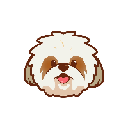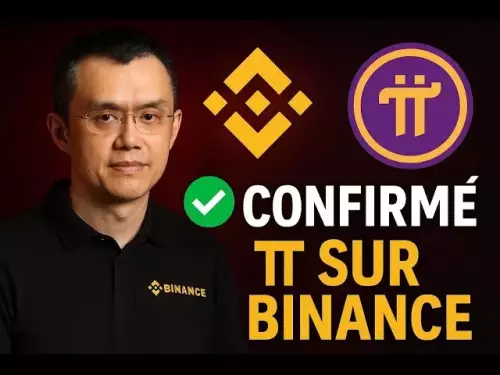-
 bitcoin
bitcoin $112715.707551 USD
-1.71% -
 ethereum
ethereum $4101.475385 USD
-3.01% -
 tether
tether $1.000644 USD
-0.02% -
 bnb
bnb $1207.619465 USD
-6.77% -
 xrp
xrp $2.501451 USD
-3.98% -
 solana
solana $202.947124 USD
-3.32% -
 usd-coin
usd-coin $1.000295 USD
0.04% -
 dogecoin
dogecoin $0.203884 USD
-4.47% -
 tron
tron $0.317154 USD
-1.72% -
 cardano
cardano $0.695009 USD
-4.43% -
 hyperliquid
hyperliquid $38.853961 USD
-8.23% -
 chainlink
chainlink $18.988674 USD
-4.64% -
 ethena-usde
ethena-usde $1.000233 USD
-0.03% -
 stellar
stellar $0.337050 USD
-3.63% -
 bitcoin-cash
bitcoin-cash $536.861728 USD
-1.28%
What are the strategies for short-term trading of SHIB? How to seize intraday fluctuations to make a profit?
To profit from SHIB's intraday fluctuations, use scalping, day trading, or swing trading strategies, and stay informed with real-time data and social media sentiment.
Apr 29, 2025 at 12:08 pm

Short-term trading of SHIB, or Shiba Inu, involves buying and selling the cryptocurrency within a short period, typically within a day, to capitalize on intraday price movements. This approach requires a keen understanding of market trends and effective strategies to maximize profits. In this article, we will explore various strategies for short-term trading of SHIB and how traders can seize intraday fluctuations to make a profit.
Understanding SHIB and Its Market Dynamics
Before diving into trading strategies, it's crucial to understand the nature of SHIB. Shiba Inu is a meme cryptocurrency that has gained significant popularity due to its community-driven nature and the viral marketing campaigns that surround it. SHIB's market is highly volatile, which presents both opportunities and risks for short-term traders. The price can fluctuate significantly within hours or even minutes, making it an ideal candidate for intraday trading.
Technical Analysis for SHIB Trading
Technical analysis is a cornerstone of short-term trading. It involves studying past market data, primarily price and volume, to forecast future price movements. For SHIB, traders should focus on the following key indicators:
- Moving Averages (MAs): These help smooth out price data to identify trends. The 50-day and 200-day MAs are commonly used. When the short-term MA crosses above the long-term MA, it's considered a bullish signal, and vice versa for bearish signals.
- Relative Strength Index (RSI): This momentum oscillator measures the speed and change of price movements. An RSI above 70 indicates overbought conditions, while below 30 suggests oversold conditions.
- Bollinger Bands: These help identify overbought and oversold levels. When the price touches the upper Bollinger Band, it might be overbought, and when it touches the lower band, it might be oversold.
By combining these indicators, traders can make more informed decisions about when to buy and sell SHIB.
Scalping Strategy for SHIB
Scalping is a short-term trading strategy that involves making numerous trades throughout the day to profit from small price changes. Here’s how to implement a scalping strategy for SHIB:
- Monitor the Market: Use real-time data and charts to keep an eye on SHIB's price movements. Platforms like TradingView or Binance can provide the necessary tools.
- Set Entry and Exit Points: Based on technical indicators, identify potential entry and exit points. For example, if the RSI indicates an oversold condition, it might be a good time to buy, and when it reaches overbought, it might be time to sell.
- Use Stop-Loss Orders: To manage risk, set stop-loss orders to automatically sell SHIB if the price drops to a certain level. This helps limit potential losses.
- Quick Execution: Scalping requires quick decision-making and execution. Ensure your trading platform can handle rapid trades without significant delays.
Day Trading Strategy for SHIB
Day trading involves buying and selling SHIB within the same trading day. This strategy can be more profitable than scalping but requires a deeper understanding of market trends. Here’s how to approach day trading SHIB:
- Analyze Daily Trends: Start your day by analyzing the previous day's trends and any news that might impact SHIB’s price. Look for patterns that could indicate potential price movements.
- Identify Key Levels: Use technical analysis to identify key support and resistance levels. These levels can act as potential entry and exit points.
- Trade Breakouts: Look for breakout opportunities where SHIB's price moves outside a defined range. A breakout above resistance might signal a buying opportunity, while a breakout below support could signal a selling opportunity.
- Manage Risk: Like scalping, use stop-loss orders to manage risk. Additionally, consider setting take-profit orders to lock in gains when the price reaches a certain level.
Swing Trading Strategy for SHIB
Swing trading involves holding SHIB for several days to capitalize on expected upward or downward market swings. This strategy can be less stressful than scalping or day trading but still requires careful monitoring. Here’s how to swing trade SHIB:
- Identify Swing Points: Use technical analysis to identify potential swing points where the price might reverse. Look for patterns like head and shoulders or double tops/bottoms.
- Enter and Exit Trades: Enter a trade when you believe the price is about to swing in your favor. Exit the trade when the swing completes, or if the market moves against your position.
- Monitor Trends: Keep an eye on broader market trends and any news that might affect SHIB. Adjust your strategy accordingly.
- Risk Management: Use stop-loss orders to limit potential losses. Also, consider diversifying your portfolio to spread risk.
Seizing Intraday Fluctuations
To effectively seize intraday fluctuations and make a profit from SHIB, traders need to be proactive and responsive. Here are some tips to help you capitalize on these fluctuations:
- Stay Informed: Keep up with the latest news and developments in the cryptocurrency space. News can significantly impact SHIB's price, and being the first to react can lead to profitable trades.
- Use Trading Bots: Consider using trading bots to automate some of your trading activities. Bots can execute trades based on predefined criteria, helping you take advantage of opportunities even when you're not actively monitoring the market.
- Leverage Social Media: SHIB has a strong presence on social media platforms like Twitter and Reddit. Monitor these platforms for sentiment analysis, as community sentiment can drive price movements.
- Practice with a Demo Account: Before risking real money, practice your strategies using a demo account. This allows you to refine your approach without financial risk.
Frequently Asked Questions
Q: How much capital should I start with for short-term trading SHIB?A: The amount of capital you start with depends on your risk tolerance and trading strategy. For beginners, starting with a smaller amount, such as $100 to $500, can be a good way to learn the ropes without risking too much. As you gain experience and confidence, you can gradually increase your capital.
Q: Can I use leverage when trading SHIB?A: Yes, many trading platforms offer leverage for trading cryptocurrencies like SHIB. However, using leverage increases both potential profits and potential losses, so it should be used cautiously. Always ensure you understand the risks involved and have a solid risk management strategy in place.
Q: How important is it to have a trading plan for SHIB?A: Having a trading plan is crucial for successful short-term trading of SHIB. A well-defined plan helps you stay disciplined, manage risk, and make informed decisions. Your plan should include your trading goals, strategies, risk management rules, and criteria for entering and exiting trades.
Q: What are the best times of day to trade SHIB?A: The best times to trade SHIB can vary, but generally, the most active trading periods are during the overlap of major market sessions, such as when the Asian and European markets are open simultaneously. Typically, this occurs between 7 AM and 12 PM GMT. Additionally, monitoring SHIB's price during significant news events or announcements can also be beneficial.
Disclaimer:info@kdj.com
The information provided is not trading advice. kdj.com does not assume any responsibility for any investments made based on the information provided in this article. Cryptocurrencies are highly volatile and it is highly recommended that you invest with caution after thorough research!
If you believe that the content used on this website infringes your copyright, please contact us immediately (info@kdj.com) and we will delete it promptly.
- Tokenization Takes Center Stage: SEC-Registered Stock Tokens Reshape Finance
- 2025-10-15 22:25:13
- Bitcoin Seized, Transferred: A New York Minute on Crypto's Wild Ride
- 2025-10-15 22:25:13
- Milk & Mocha's $HUGS: Can This Crypto Presale Deliver a 100x Portfolio?
- 2025-10-15 22:30:01
- Memecoins Grow Up: $HUGS Presale Offers Real Utility
- 2025-10-15 22:45:13
- HUGS Launch, Crypto Bull Run, and a Perfect Storm Brewing?
- 2025-10-15 22:45:13
- Zero Knowledge Proof, Whitelists, and the Future of Blockchain Privacy
- 2025-10-15 22:30:01
Related knowledge

Practical parameter settings for a Bitcoin multi-timeframe moving average system
Sep 18,2025 at 10:54pm
Optimizing Timeframe Combinations for Bitcoin Trading1. Selecting appropriate timeframes is crucial when building a multi-timeframe moving average sys...

How can I filter out false breakouts in Dogecoin high-frequency trading?
Sep 22,2025 at 01:00am
Understanding False Breakouts in Dogecoin Trading1. A false breakout occurs when Dogecoin's price appears to move beyond a defined support or resistan...

Techniques for identifying tops and bottoms in the Bitcoin on-chain NVT model
Sep 20,2025 at 07:54pm
Understanding the NVT Model in Bitcoin Analysis1. The Network Value to Transactions (NVT) ratio is often described as the 'P/E ratio' of the cryptocur...

What does the surge in open interest in Bitcoincoin futures mean?
Sep 20,2025 at 11:18pm
Understanding the Surge in Dogecoin Futures Open Interest1. A surge in open interest within Dogecoin futures indicates a growing number of active cont...

How can I use the Ethereum USDT premium to gauge market sentiment?
Sep 18,2025 at 11:55pm
Understanding the Ethereum USDT Premium1. The Ethereum USDT premium refers to the price difference between USDT (Tether) traded on Ethereum-based plat...

What should I do if Ethereum staking yields decline?
Sep 20,2025 at 06:18am
Understanding the Causes Behind Declining Ethereum Staking Yields1. The Ethereum network transitioned to a proof-of-stake consensus mechanism with the...

Practical parameter settings for a Bitcoin multi-timeframe moving average system
Sep 18,2025 at 10:54pm
Optimizing Timeframe Combinations for Bitcoin Trading1. Selecting appropriate timeframes is crucial when building a multi-timeframe moving average sys...

How can I filter out false breakouts in Dogecoin high-frequency trading?
Sep 22,2025 at 01:00am
Understanding False Breakouts in Dogecoin Trading1. A false breakout occurs when Dogecoin's price appears to move beyond a defined support or resistan...

Techniques for identifying tops and bottoms in the Bitcoin on-chain NVT model
Sep 20,2025 at 07:54pm
Understanding the NVT Model in Bitcoin Analysis1. The Network Value to Transactions (NVT) ratio is often described as the 'P/E ratio' of the cryptocur...

What does the surge in open interest in Bitcoincoin futures mean?
Sep 20,2025 at 11:18pm
Understanding the Surge in Dogecoin Futures Open Interest1. A surge in open interest within Dogecoin futures indicates a growing number of active cont...

How can I use the Ethereum USDT premium to gauge market sentiment?
Sep 18,2025 at 11:55pm
Understanding the Ethereum USDT Premium1. The Ethereum USDT premium refers to the price difference between USDT (Tether) traded on Ethereum-based plat...

What should I do if Ethereum staking yields decline?
Sep 20,2025 at 06:18am
Understanding the Causes Behind Declining Ethereum Staking Yields1. The Ethereum network transitioned to a proof-of-stake consensus mechanism with the...
See all articles










































































